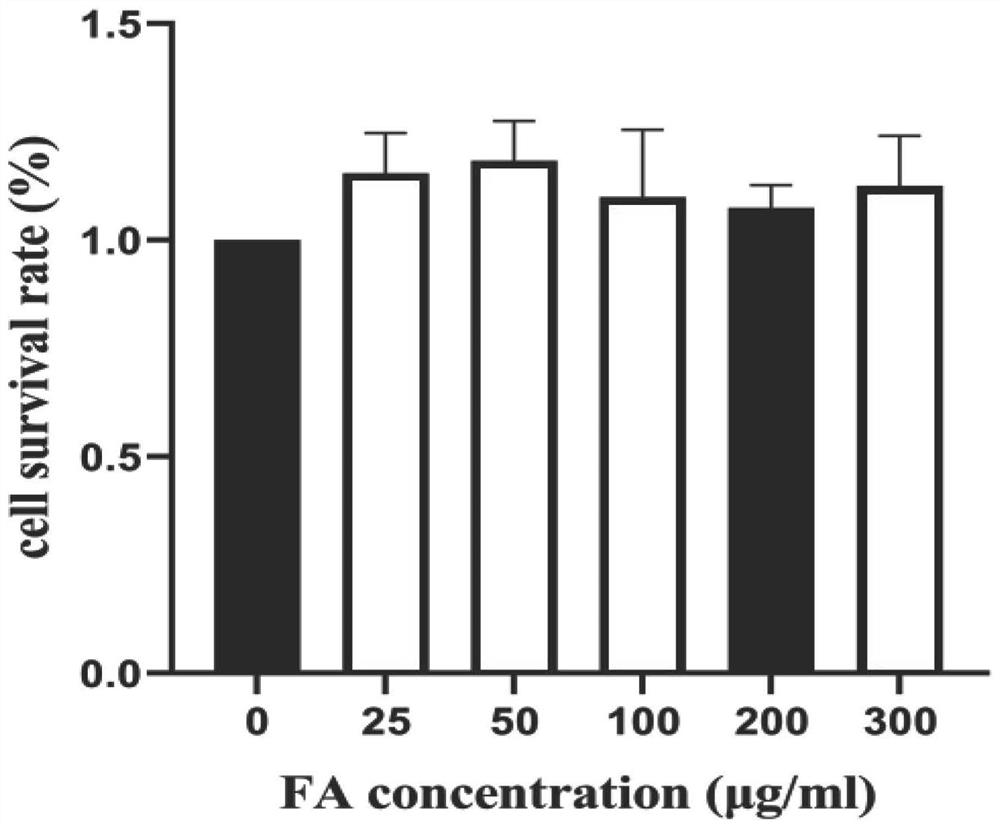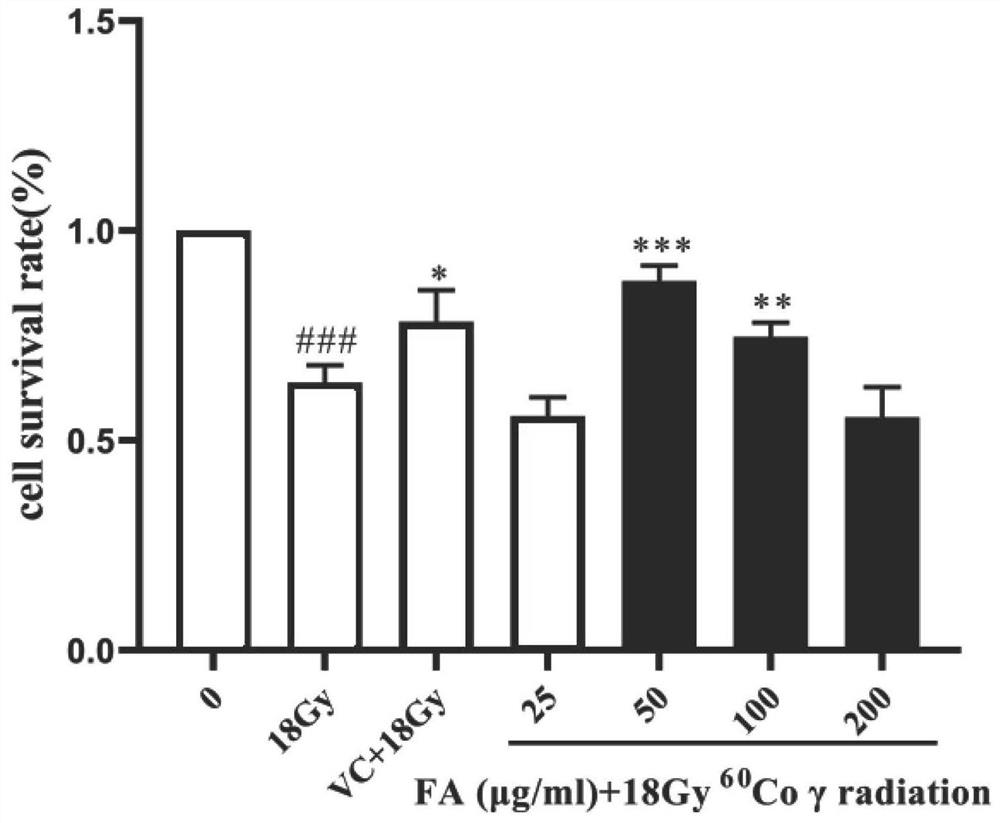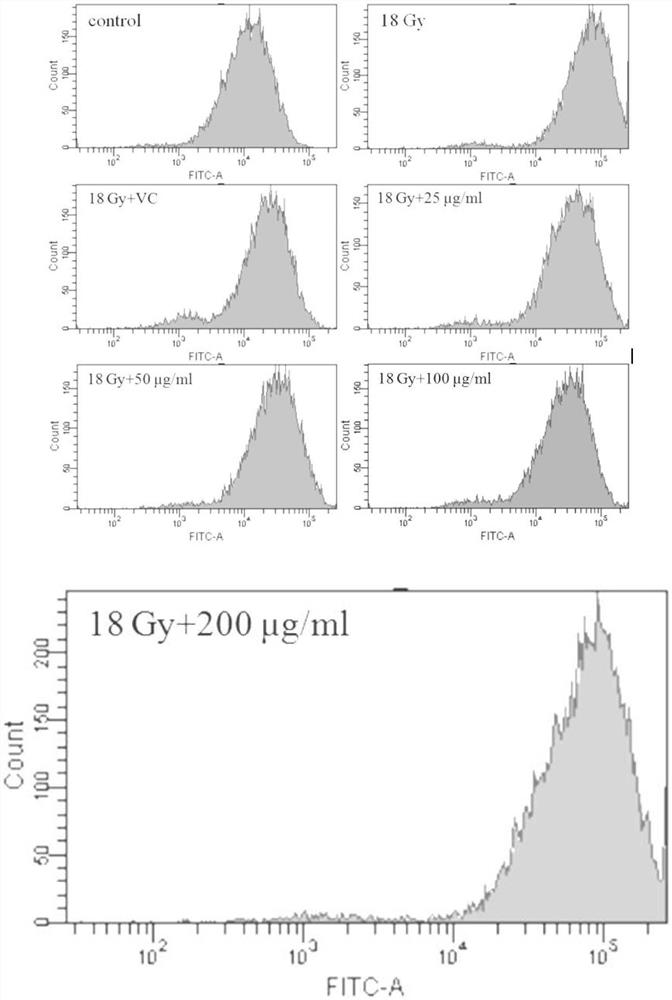Application of ferulic acid in treatment of radioactive skin injury
A radiation-induced skin and radiation-injured technology, applied in the application field of ferulic acid in the treatment of radiation-induced skin injuries, to achieve the effects of obvious wound granulation tissue hyperplasia, reduced skin edema, and good damage repair effect
- Summary
- Abstract
- Description
- Claims
- Application Information
AI Technical Summary
Problems solved by technology
Method used
Image
Examples
Embodiment 1
[0056] This example introduces a kind of preparation method of ferulic acid gel, specifically comprises the following contents:
[0057] The preparation method of ferulic acid gel is as follows: disperse 0.75g carbomer in 75ml, 80ml, 85ml distilled water and fully swell for 24h; add 5g glycerol and 0.001g p-hydroxyl to the fully swollen carbomer with different concentrations Ethyl benzoate, after mixing with a stirring rod, add 5g, 10g, 15g ferulic acid and mix respectively; final quantification, add an appropriate amount of triethanolamine in the gel to adjust the pH value and viscosity, and quantify to 100g to obtain three different concentrations of ferulic acid gel.
Embodiment 2
[0059] This example illustrates the effects of different concentrations of ferulic acid solutions on the viability of HaCaT cells.
[0060] In this example, HaCaT cells were treated with different concentrations of ferulic acid (300, 200, 100, 50, 25 μg / ml), and the cell viability of HaCaT cells was detected 24 hours after administration. After ferulic acid was administered to HaCaT cells in good condition for 24 hours, compared with the control group without administration, ferulic acid at each concentration had no significant change on the viability of normal HaCaT cells. Figure 1A Shown: Figure 1A is the effect of different concentrations of ferulic acid solution on the viability of normal HaCaT cells; with 60 HaCaT cells were irradiated with Coγ-rays to form a cell model of radiation skin injury. Vitamin C was used as a positive control drug, and different concentrations of ferulic acid (200, 100, 50, 25 μg / ml) were used to treat the irradiated HaCaT cells. Effects of co...
Embodiment 3
[0068] In this example, different concentrations of ferulic acid are 60 The changes of ROS in HaCaT cells after Coγ-ray irradiation are described.
[0069] when 60 After Coγ-rays irradiate the skin, ROS will be induced, and when the redox balance of the skin is broken, it will cause oxidative damage to the skin. Give an absorbed dose of 18Gy 60 HaCaT cells were stimulated by Coγ-rays, and VC and ferulic acid were given to intervene before irradiation. The irradiated HaCaT cells were treated with different concentrations of ferulic acid (200, 100, 50, 25 μg / ml), and the effects of different concentrations of ferulic acid on the ROS level of HaCaT cells were detected 24 hours after irradiation.
[0070] like figure 2 as shown, figure 2 For different concentrations of ferulic acid 60 Changes of ROS in HaCaT cells after Coγ-ray irradiation ( n=3), ### P<0.001 compared with normal group, *P<0.05, **P<0.01vs, ***P<0.001 compared with irradiation group.
[0071] Compare...
PUM
| Property | Measurement | Unit |
|---|---|---|
| melting point | aaaaa | aaaaa |
Abstract
Description
Claims
Application Information
 Login to View More
Login to View More - R&D
- Intellectual Property
- Life Sciences
- Materials
- Tech Scout
- Unparalleled Data Quality
- Higher Quality Content
- 60% Fewer Hallucinations
Browse by: Latest US Patents, China's latest patents, Technical Efficacy Thesaurus, Application Domain, Technology Topic, Popular Technical Reports.
© 2025 PatSnap. All rights reserved.Legal|Privacy policy|Modern Slavery Act Transparency Statement|Sitemap|About US| Contact US: help@patsnap.com



